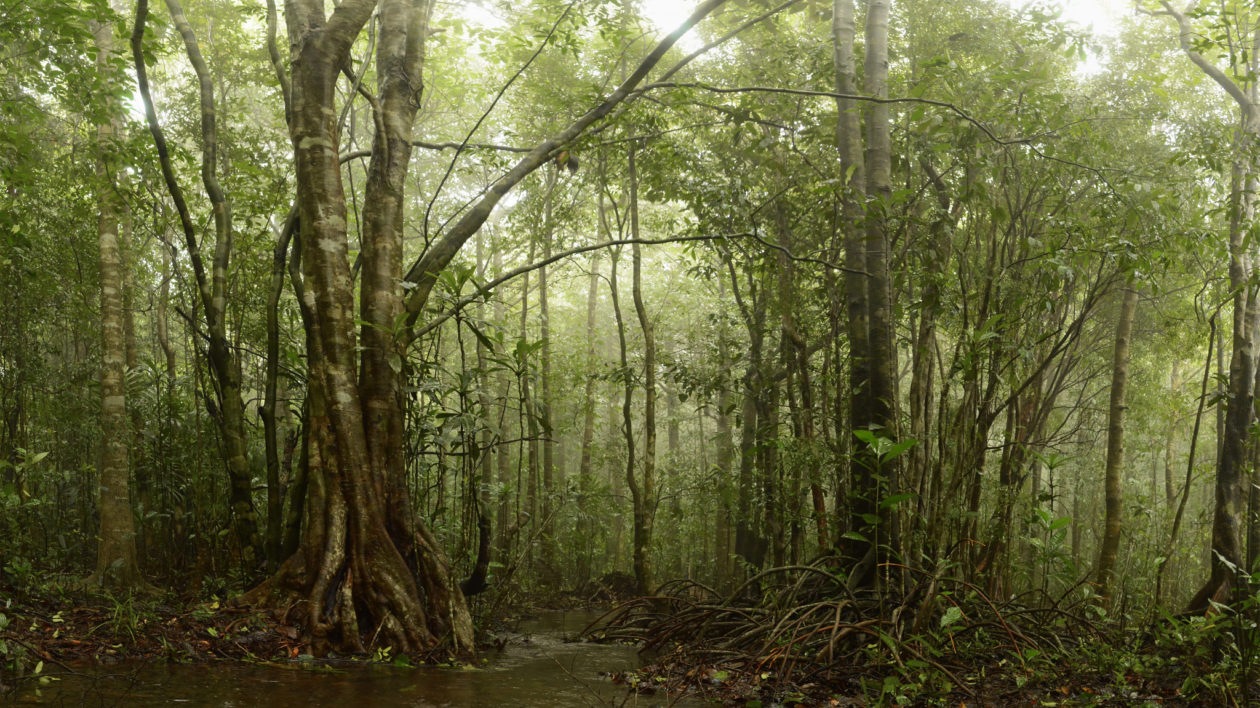Plantations and natural forest regeneration are leading strategies for enhancing carbon sequestration and using nature to fight climate change. New science shows that diverse natural forests with a mix of tree species provide more stable and reliable carbon capture than monoculture plantations in the long run.
The Gist
Published in Environmental Research Letters, the study focused on India’s Western Ghats Mountains, one of 36 global biodiversity hotspots. The mountains are home to several wildlife reserves that were once colonial teak and eucalyptus plantations, allowing researchers to compare the carbon sequestration of both long-lived monoculture plantations and neighboring native forest.
Led by Anand M. Osuri, a scientist at Nature Conservation Foundation – India and former Columbia University NatureNet Science Fellow, the team discovered that carbon stocks in the plantations were 30 to 50 percent lower than natural evergreen forest, and about equivalent to moist deciduous forest. They also found that the rate of carbon capture in plantations was less stable over time, and natural forests were more resilient to disturbances, including drought.
“Our results show that while certain types of monocultures can potentially accumulate significant carbon stocks over time, they cannot replace the climate-regulating functions provided by natural forests,” says Osuri.
The Big Picture
Tropical forests sequester about 2.0 Gigatons of carbon from the atmosphere each year, and store more than 400 Gigatons in their vegetation and soils. Forest loss and degradation are still major contributors to global carbon emissions. Nature Conservancy science shows that both protection and restoration of forests will be critical to unlocking nature’s potential to fight climate change and reducing global emissions.
Many nations now have commitments to increase forest cover under international climate treaties, including the 2015 Paris Climate Agreement. But these treaties often fail to distinguish between restoring natural forests and plantations, or prioritize both equally. As a result, lower-diversity tree plantations are increasing, as natural forests disappear.
Previous research established that natural forests sequester more carbon than short-rotation commercial monoculture plantations. (As well as harboring more biodiversity and providing more ecosystem services.) Osuri’s research is the first to examine how longer-lived plantations perform, relative to natural forests.

The Takeaway
When it comes to carbon sequestration, not all forests are created equal.
“Protecting existing natural forests, and restoration using a diverse mix of native tree species, might be more reliable options for mitigating climate change than raising monocultures,” says Osuri. “Such approaches would also benefit biodiversity conservation and sustain multiple ecosystem services.”
That’s especially true in regions where climate change is causing increasing weather variability and drought, as Osuri’s results show that natural forests lose less of their sequestration ability during a drought.
International climate strategies need to recognize that species-rich natural forests are a better investment for climate mitigation, instead of promoting low-diversity plantations.
Anand Osuri would like to acknowledge collaborators from The Nature Conservancy, Columbia University, & Nature Conservation Foundation-India.




If you have an interest, the book, The Hidden Forest authored by Jon Luoma, details the complicated connections of old growth ecosystems that we are just beginning to understand. Modern day reforestation by private or government entities is nothing more than planting a cornfield.
That is good information to hear. It is needed information at times like these. I wish this particular article and pictures could be forwarded. I could forward this to 2 Environmentalists that would be interested in this at least, maybe more.